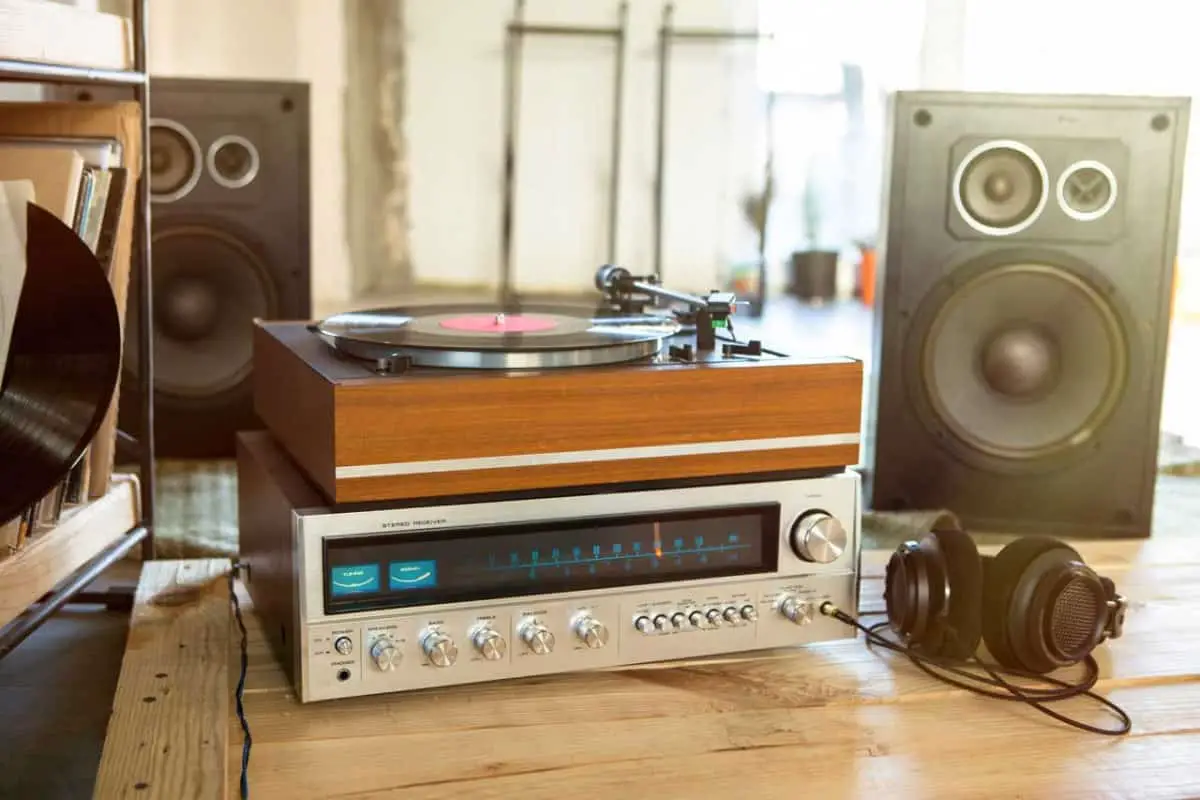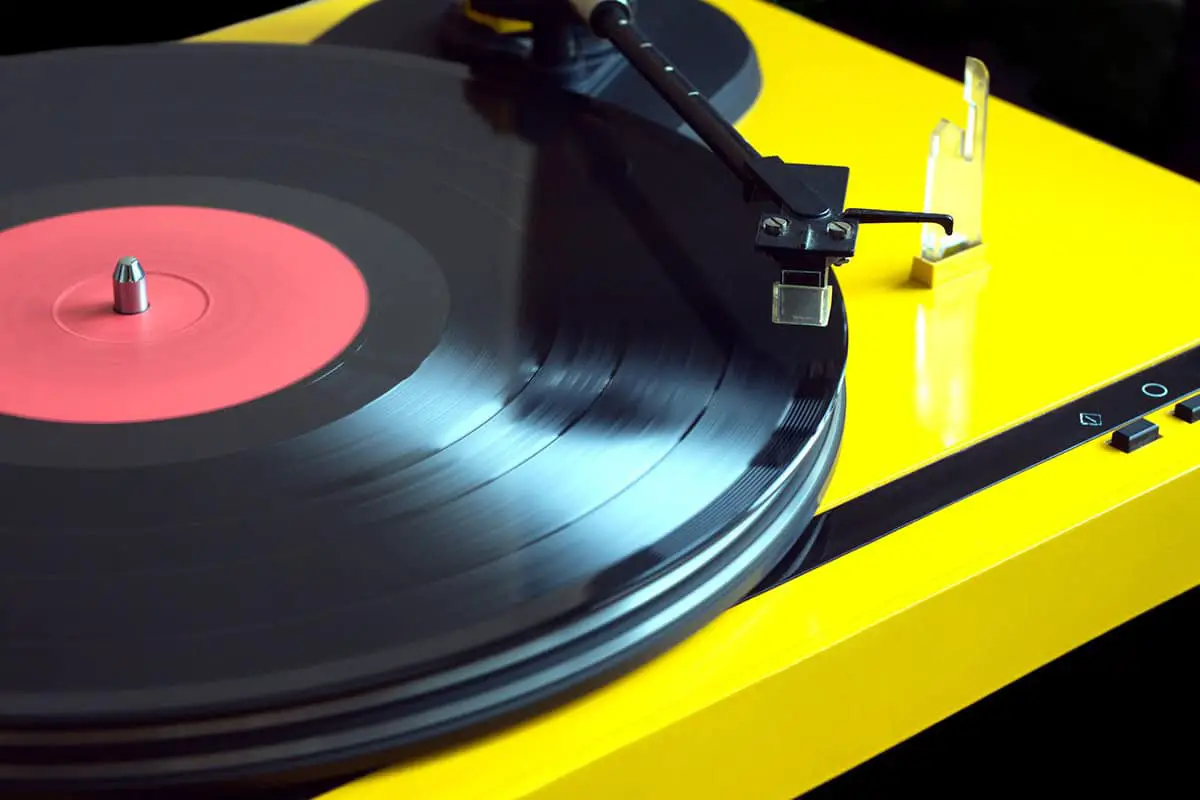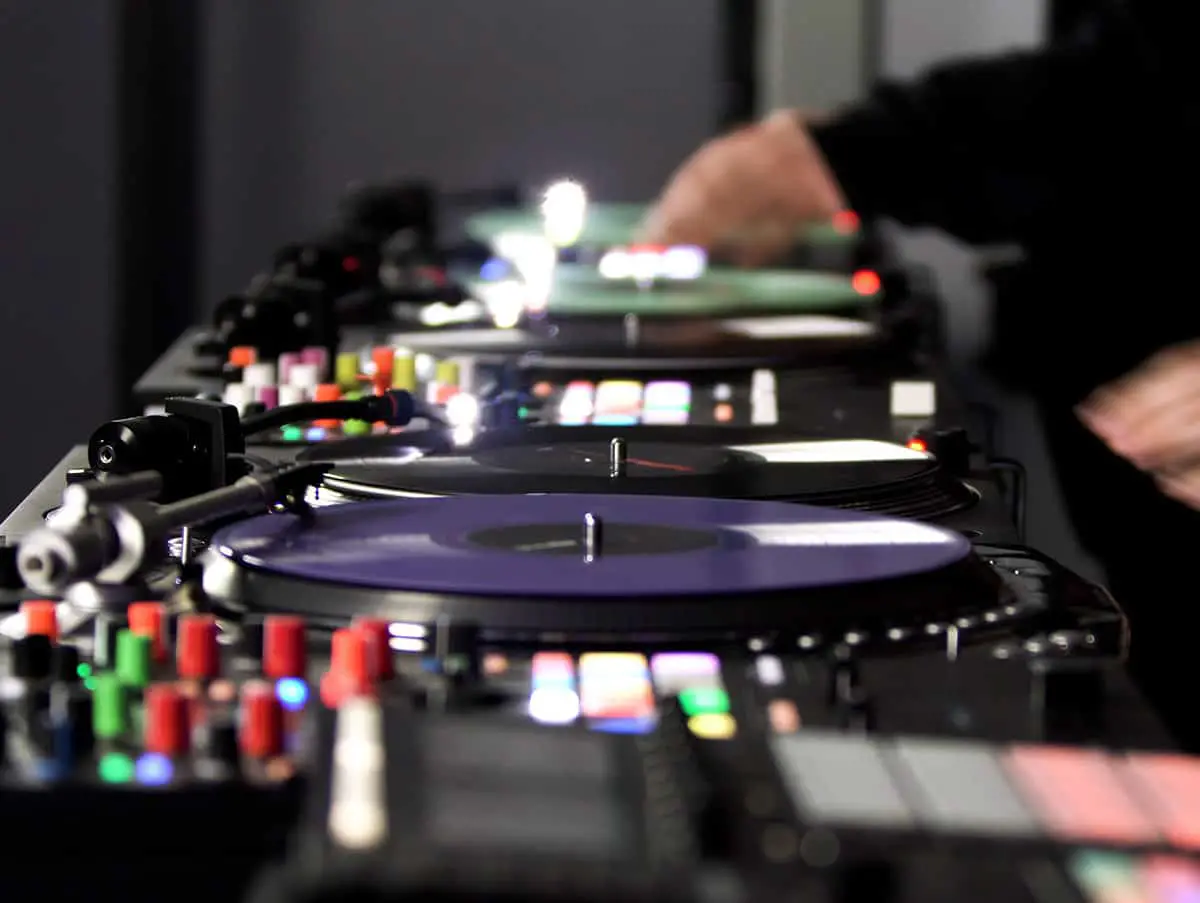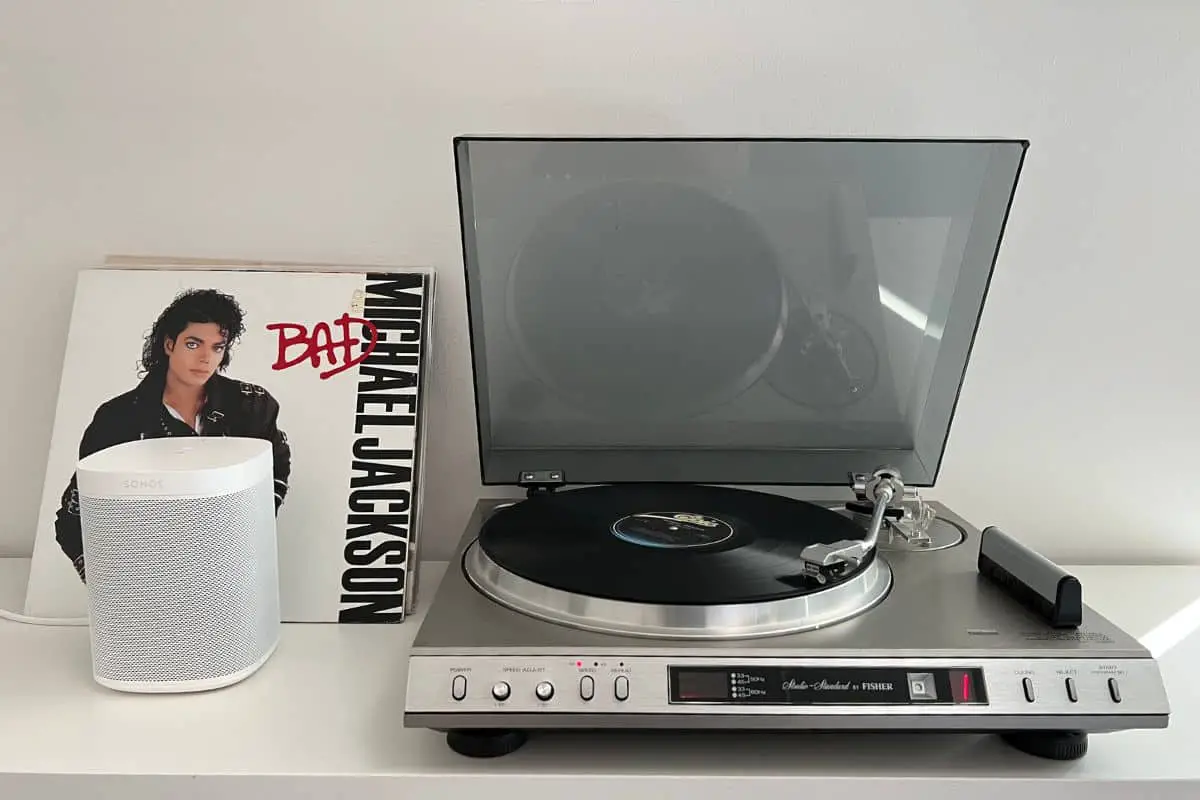This post contains affiliate links.
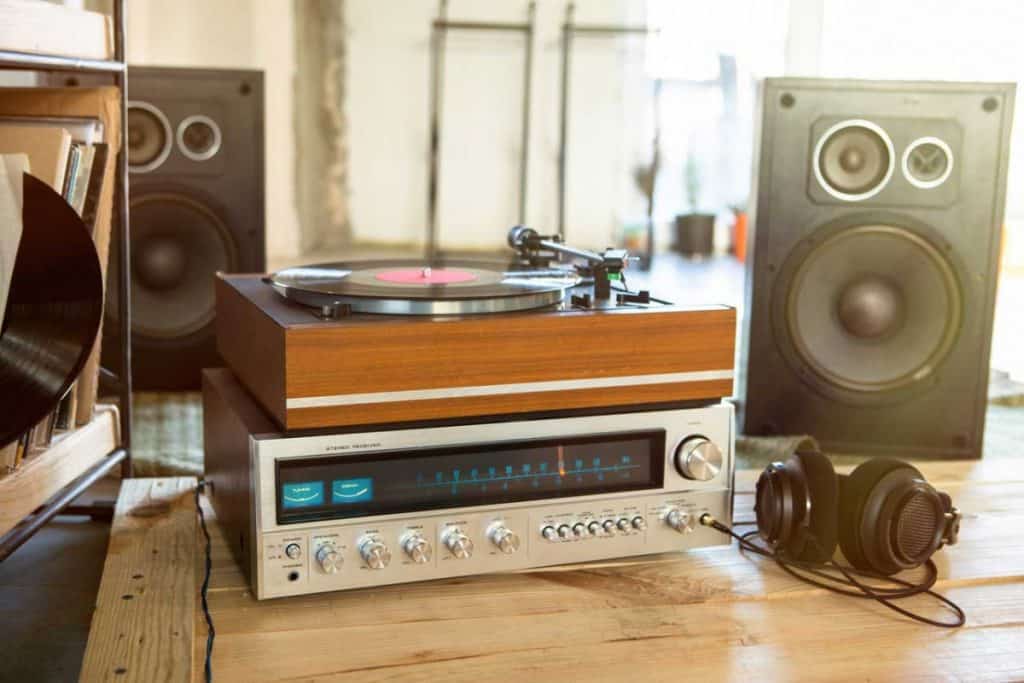
Can you put a turntable on top of a receiver? Turntable setups have evolved. With so many options in the market, correctly positioning your setup can be a chore. No worries, this article will help you efficiently set up your turntable and all the different devices that come with it.
Firstly, experts recommend not placing your turntable on top of your receiver. Here are the reasons why:
1.Receivers generate a lot of vibrations that will negatively affect your turntable.
2.Experts recommend placing your turntable on a vibration-free and movement-free surface
3.An improper setup can damage your records.
If you’re looking for a guide to help you position your turntable correctly, you’re in the right place. This article will give you advice on your turntable, receiver, etc., setup, and a bit more information to help you along the way. If you’re interested, then be sure to keep reading.
Table of Contents
Can You Put A Turntable On Top Of A Receiver?
Physically, you can take the turntable and put it on the receiver. It should take less than five minutes to do the entire process. But is it the right thing to do?
Unfortunately, it’s not. In my experience, putting your turntable on top of your receiver is not the best thing for your turntable setup. At first, it may seem easy and probably efficient. Everything would be at a convenient distance, and you can save up on space if that’s what you’re looking for in a setup.
However, don’t get it twisted; this positioning will bring more harm than good, and here’s why.
What Is A Receiver?
It’s best to address the elephant in the room that some readers may not have basic turntable knowledge. It’s nothing to be ashamed of; knowledge is power. Maybe they’re starting, and it’s good practice to include everyone in a conversation.
A turntable tends to output a low phono signal that the human ear cannot possibly pick up. So how do we finally hear the phono signal? It’s all thanks to the receiver.
A receiver is a phono signal amplifier. It boosts the signal to a point the human ear can decipher.
Others may define a receiver as a combination of the following devices:
- Power amplifier
- Line-stage amplifier
- Radio Tuner
- Phono preamplifier
It’s a 4-in-1 package, and to be honest, it’s a steal to audiophiles. In simple terms, a receiver’s primary purpose is to transmit the sound from the turntable to the speakers.
What Is A Phono Preamplifier?
You may have also come across the term preamp or preamplifier. Receivers and preamps tend to do the same thing. However, they are two entirely different components.
Users use preamps alongside power amplifiers. You use the power amplifiers to generate power for your speakers.
Nowadays, preamps tend not to come with a phono stage. Some brands will come with a phono stage, but it’s not mandatory. Why? Consumers prefer to have these two components separate.
As the name suggests, a phono preamplifier has something to do with the low phono sound mentioned earlier. A phono preamplifier takes the phono signal from the phono cartridge and converts that signal into music.
It does this conversion process through equalizing and then amplifying the sound.
The phono preamplifiers come in three ways:
- As a singular unit
- Combined into the turntable and sold as a unit
- It comes with a receiver, integrated amp, or preamplifier.
It was important to mention preamps and phono preamplifiers to differentiate these components from receivers. They may have the same purpose, but they function differently and produce different results.
What Should I Put My Turntable On?
You want to put your turntable on a surface that does not vibrate and will not move at all. Turntables can be pretty fragile things; because of this reason, they need a surface that will reduce the risk of any accidents.
Some experts recommend positioning the speakers and the turntable on different surfaces. By doing this, you do not provide a transmission mechanism for the vibrations to travel through.
Sound travels fast, and with suitable mediums, vibrations can travel across surfaces. It’s why soundproofing is such a chore. Sound waves and sound vibrations escape faster than you can guess. In a way, by putting the speakers and turntable on different surfaces, you are creating your version of a soundproof scenario.
It’s not exactly at the recording studio level, but it shows that you grasp the concept of sound and its properties, which is great if you’re an audiophile into turntables.
What Happens When You Put A Turntable On Top Of A Receiver?
While saying that putting a turntable on top of a receiver is not the best professional practice is simple. However, it’s always best to give reasons behind the logic. How else would scientists accept assumptions without proof?
So why is it a big no-no?
1. Experts recommend a vibration-less flat surface
Mainly, you want a surface that is free from movement and vibrations. Vibrations will negatively impact the quality of the sound. It may turn to borderline noise at some point.
That’s not what you’re trying to achieve from a turntable. You want lovely and seamless sound or music coming from your turntable. Other factors may impede this desire, but let’s not add wrong turntable positioning to the list.
2. Receivers generate a lot of unwanted vibrations
This point ties back into the first one, your turntable requires a vibration-less surface. The receiver is not vibrationless. The process of amplifying the sound involves sound vibrations, and these vibrations will inevitably impede your turntable.
3. Incorrect turntable setup can damage your records or your equipment.
The science of it all can be frustrating at times. However, it all has a purpose. By putting the turntable on top of the receiver, you’re blocking airflow to the receiver.
This blockage could result in overheating, and finally, you would no longer have a fully functional receiver. Wrong positioning has ruined several turntable setups, which is why it’s best to learn from the mistakes of others.
Care and maintenance of turntable setups are the responsibility of its owners. The first step in caring for your turntable is by placing it in the correct position. Make sure to allow it a firm space to sit, and it will be a worthy investment.
Are You Interested In What Other Like-minded Individuals Are Asking? Here Are Some Extremely Helpful Faqs.
1. Can you stack a record player on an amp?
Depending on the type of amp, it’s best not to test it out and not stack it at all. It might come across as convenient and efficient to some degree, but in the long run, it’s not. Stacking it reduces the proper airflow and can cause dust accumulation and, finally, overheating.
Experts recommend separating your record player and your amp (regardless of which amp it is) in your setup. Make sure to allow the necessary space for each component.
2. Can you position a record player on its side?
Vintage record players may not survive this evolution. But there are specialized record players that manufacturers built to reduce the amount of space they take and increase the portability.
However, regular record players or turntables will not be worth the try. The design is to have them as flat and horizontal as possible. You cannot play it while it’s on the side if it could work while they’re on the side.
Kindly stick to the manual; it may help you more than you think.
3. How should you go about starting your turntable setup?
It depends on your budget, research, and what you want your turntable set up to do for you. Firstly, understand what components you want as part of your setup. This information will give you a starting point for your setup. A significant component of the setup would be some records.
Sources
1.Jenna Miles, The Beginner’s Guide to Vinyl Records: How to Build, Maintain and Experience a Music Collection in Analogue (Massachusetts: Adams Media,2017) 256.
2.Jeffree Lee Pucket, The Beginner’s Guide to a Basic Turntable Set-Up, Discogs, https://blog.discogs.com/en/turntable-set-up-guide-gear/ July 30th, 2021.
3.Discogs, Turntable 101: How To Set Up Your Turntable Correctly, Discogs, https://blog.discogs.com/en/how-to-setup-your-turntable/ Accessed July 30th, 2021.
4.U-Turn Audio, How to Position your Turntable, U-Turn Audio, https://uturnaudio.com/pages/turntable-positioning Accessed July 30th, 2021.
5.Purdy Lounge, Preamp vs. Receiver – Detailed Comparison, Purdy Lounge, https://purdylounge.com/preamp-vs-receiver/ Accessed July 30th, 2021.
VacationVinyl.com is a participant in the Amazon Services LLC Associates Program, an affiliate advertising program designed to provide a means for sites to earn advertising fees by advertising and linking to Amazon.com. We also participate in other affiliate programs which compensate us for referring traffic.

